Why VidMob Is Updating Its Mission Statement

In 2017, we aligned on a mission statement for VidMob. We were going to Evolve Creativity for the Better. For six years, this mission guided us forward. We worked tirelessly to build technology to improve the lives of professional creators, change diversity norms in the industry, use AI to generate and analyze new types of data, use that data in novel ways to increase performance for marketers, and help our platform partners alleviate some of the creative friction limiting the success of their clients.
This mission served us well, but it was never perfect. It always felt too big. In a way, it contained everything, and in doing so, meant nothing. It was also hard to connect with on a daily basis. Walking home at night, could I really tell whether or not I’d helped Evolve Creativity for the Better that day? It was clear that we would have to evolve our mission some day. But the question was always, when?
There are two important forces circling each other right now in the marketing world. The first is the feeling, whether right or wrong, that creativity is under assault. According to the MMA, the average CMO tenure is down to 18 months. On average, companies have an NPS score of -1.3 for their own marketing function! Decades of near-total focus on media efficiency have left us with little juice left to squeeze through expected routes. And as we prepare to transition from a world of content scarcity to a world of content abundance, creative effectiveness is about to become one of the most important challenges of the marketing function. With many traditional procurement teams still viewing creative technology investments as “non-working”, companies are at serious risk of missing the next big opportunity.
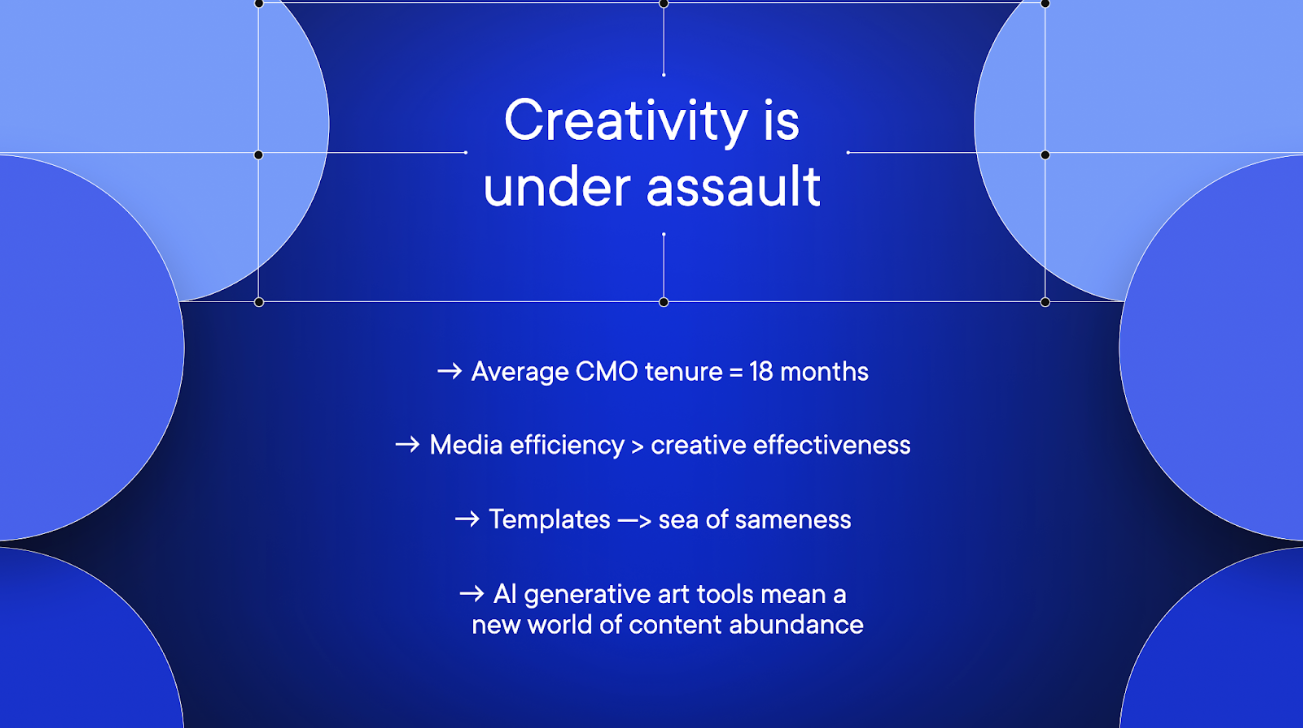
The other inexorable force is AI. Make no mistake about it. This is not Web3. The impact that AI is going to have on all of our lives is real and profound. One of the top execs at Amazon Rekognition recently told a group of us at VidMob that they were observing AI compute double every 5 months. To help put this in context, consider that we’ve spent our entire lives in a world where everything that touched technology was governed by Moore’s Law – doubling in capability every 18 months. Doubling every 5 months is 2x at 5 months, 4x at 10 months, 8x at 15 months, etc. Put simply, very few of us are prepared for the pace of change that lies ahead.
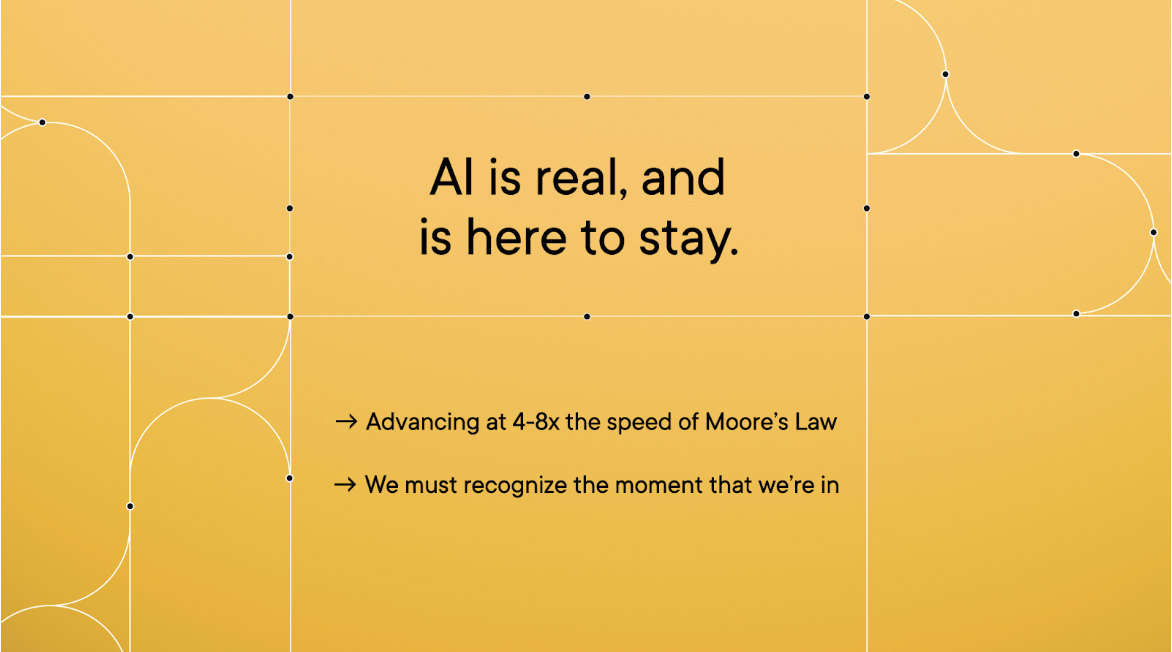
AI is going to make or break marketing departments, and its fuel is data. There will be AI systems trained on commodity data. And there will be AI systems trained on unique data. If your goal is to outperform your competitors and connect with your customers in a unique way that resonates emotionally and lasts over time, you better make sure your AI systems fall in the latter bucket. These two forces are colliding, and therein lies both the challenge and the opportunity.

One of the most powerful forms of unique data is human feedback. Long before Google started training search models on human response to results, and Facebook did similarly with Feed construction, scientists knew that integrating human feedback into data systems was key to model development. Models incorporating human feedback perform 3x better than pre-trained models and nearly 2x better than supervised models.
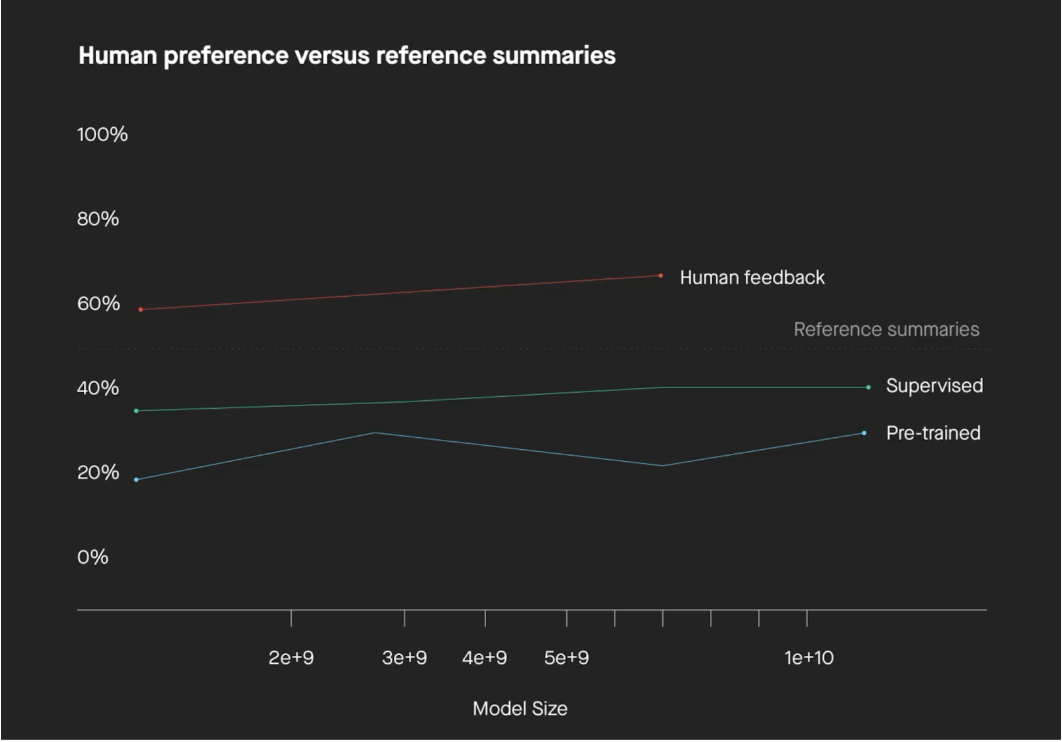
Models that incorporate human feedback are all around us today. The more common term, Reinforcement Learning from Human Feedback (“RLHF”), can be found in papers describing most of the cool stuff that’s happening today. OpenAI used RLFH in an application called InstructGPT to train the Large Language Model underlying GPT-4.
VidMob has been pursuing this for years in a business architecture that we’ve colloquially called “Services-In-The-Loop”. What this means to us is that we have designed our operations and technology to capture the daily human decisions by people performing services on top of our platform. Why did we do this? Simple. It enables our creative scoring to evolve beyond static platform platitudes. After all, how audiences respond to creative is downstream of culture, and culture is as dynamic today as it has ever been. But beyond the entry point of creative scores, it leads to more valuable strategic insights for our clients who are using creative as a way to understand their customers. All of this helps power more effective creative for their campaigns.
But the other reason was that it leads to a scalable source of unique data that applies across every platform, across the whole digital marketing continuum (from social to programmatic to retail media to CTV), and up and down the whole comms stack (from paid to organic to commerce journey and beyond).
At its highest level, this is what VidMob’s integrated architecture looks like:
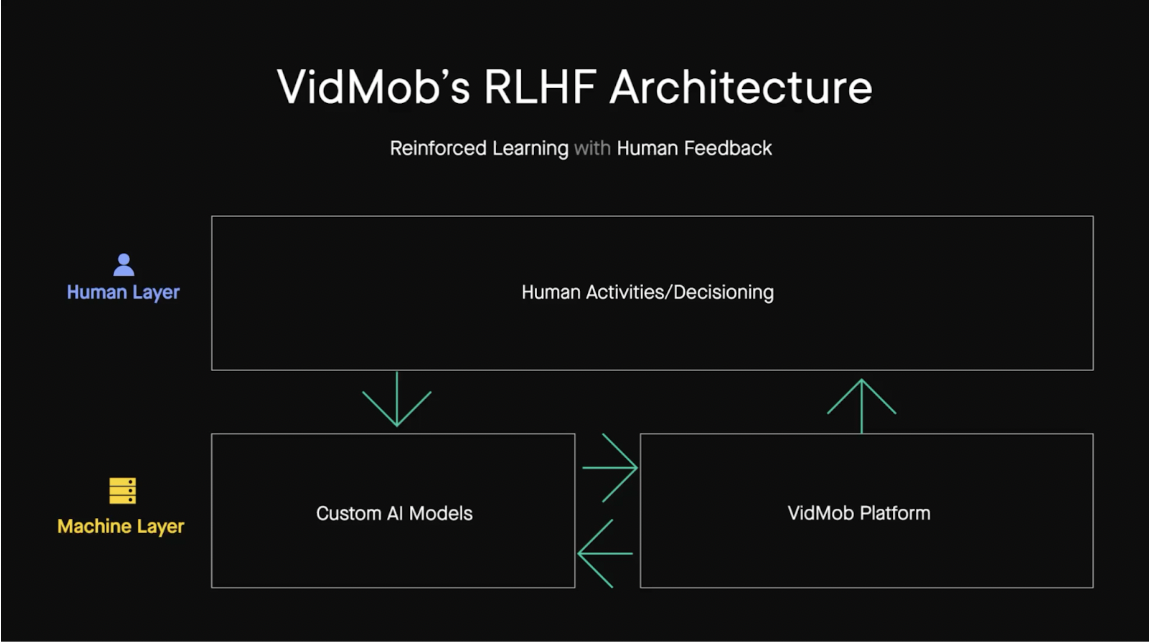
Here it is in greater detail:
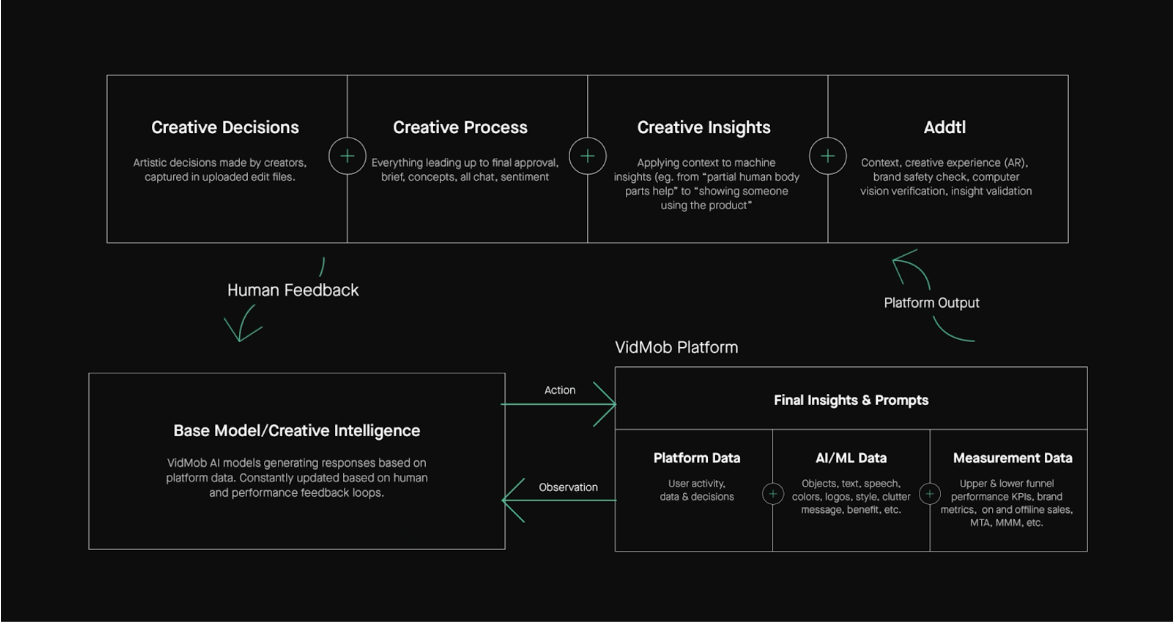
The right company strategy would consider both of the forces mentioned at the top of this post, and the right mission statement would weave them together in a way that was both timely and timeless – and do so with 5-hour ENERGY clarity.
Unconstrained by the guardrails of brevity, I would say that we work every day to increase creative effectiveness for top marketers by offering a platform that integrates AI, human creative services, and measurement into a reinforcement model with best-in-class insights….blah. Garbage. Too many words.
Here’s another attempt; We’re building the world’s most robust reinforcement model for creative decisioning, integrating signals across walled gardens, open web, retail media and connected television, in order to improve the creative effectiveness of the world’s top marketers. Again, too long. I fell asleep halfway through it.
But if we take a step back and look at these failed attempts holistically, a pattern begins to emerge:
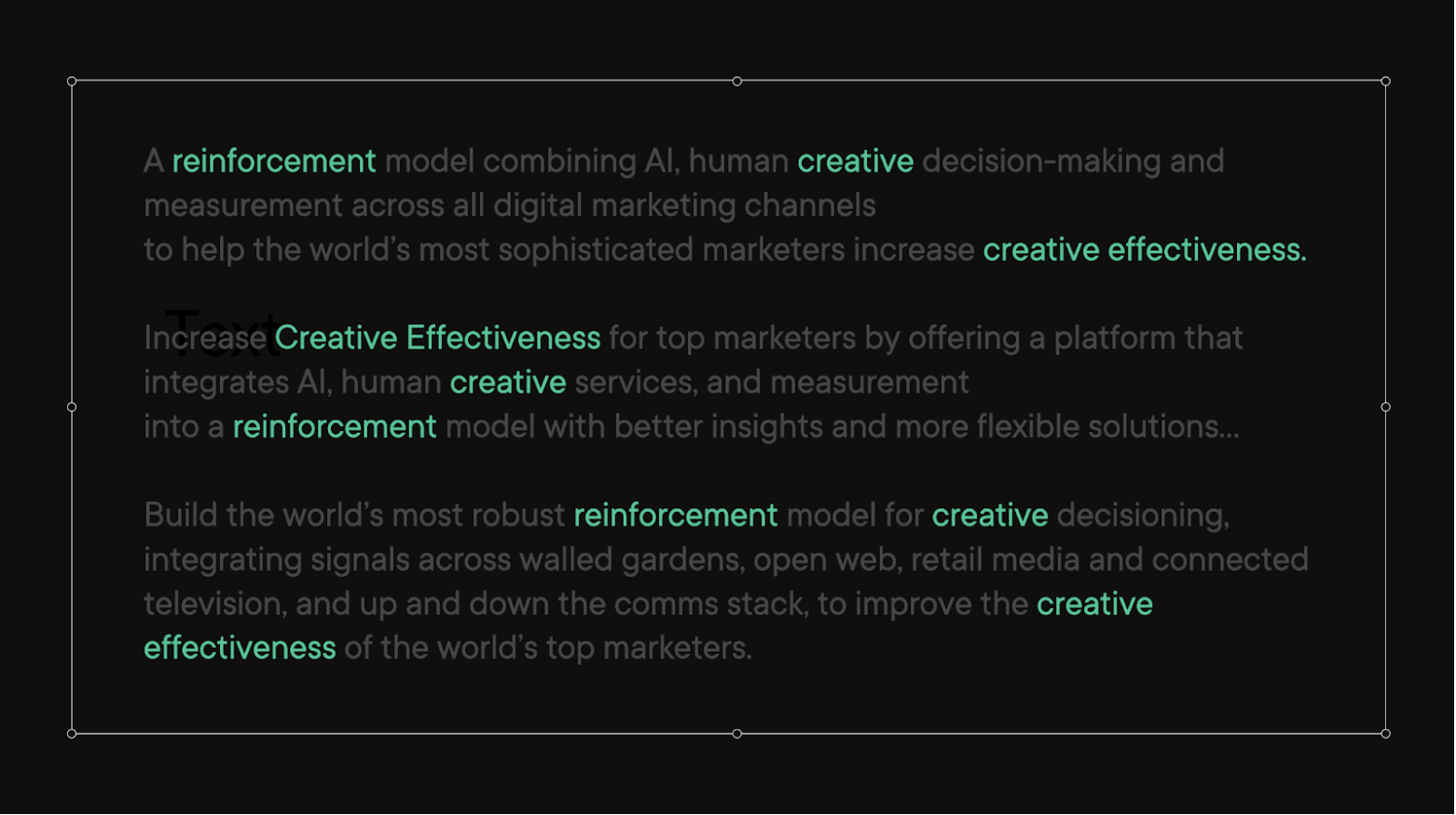
All of a sudden it becomes clear what our mission needs to be. It’s the path we’ve long been on, but without the support of a unifying battle cry to the company. VidMob’s mission, put simply, is to Reinforce Creativity for Effectiveness.

In this frame, we all now know exactly what we need to do on any day. In much the same way that an employee of Google knows that their job is to Organize the World’s Information, we all have a role to play in connecting the reinforcement loops that underlie this powerful construct. We will continue our work of building, operating and refining the world’s most powerful reinforcement model for creativity. This is our “How.” And in a world where unique data is the fuel to differentiated AI output, this will give the users of VidMob’s platform something that no one else has. And we will do this to drive creative effectiveness. This is our “Why.”
The world will see an explosion of Generative AI in the weeks and months ahead. As we move into this world of content abundance, scaling production to fill the pipes will no longer be the challenge facing marketing organizations, much in the same way that simply making noise is not the central challenge for a musician. Making (and scaling) truly effective creative will be the difference between successful and failing businesses. With an AI engine that is reinforced at incredible scale every day with truly unique creative data, VidMob is more excited than ever about our ability to make creative a lever for business performance. By measuring and proving the impact of more effective creative, we’re helping marketers do their job better and take credit for it. Now that’s reinforcing creativity! And in a lot of ways, it’s right back where we started all those years ago. Six years after we began messing around with AI, it finally feels like we have a company-wide mission statement that matches the operational and technical vision our team has been executing against all along: Reinforce Creativity for Effectiveness.





